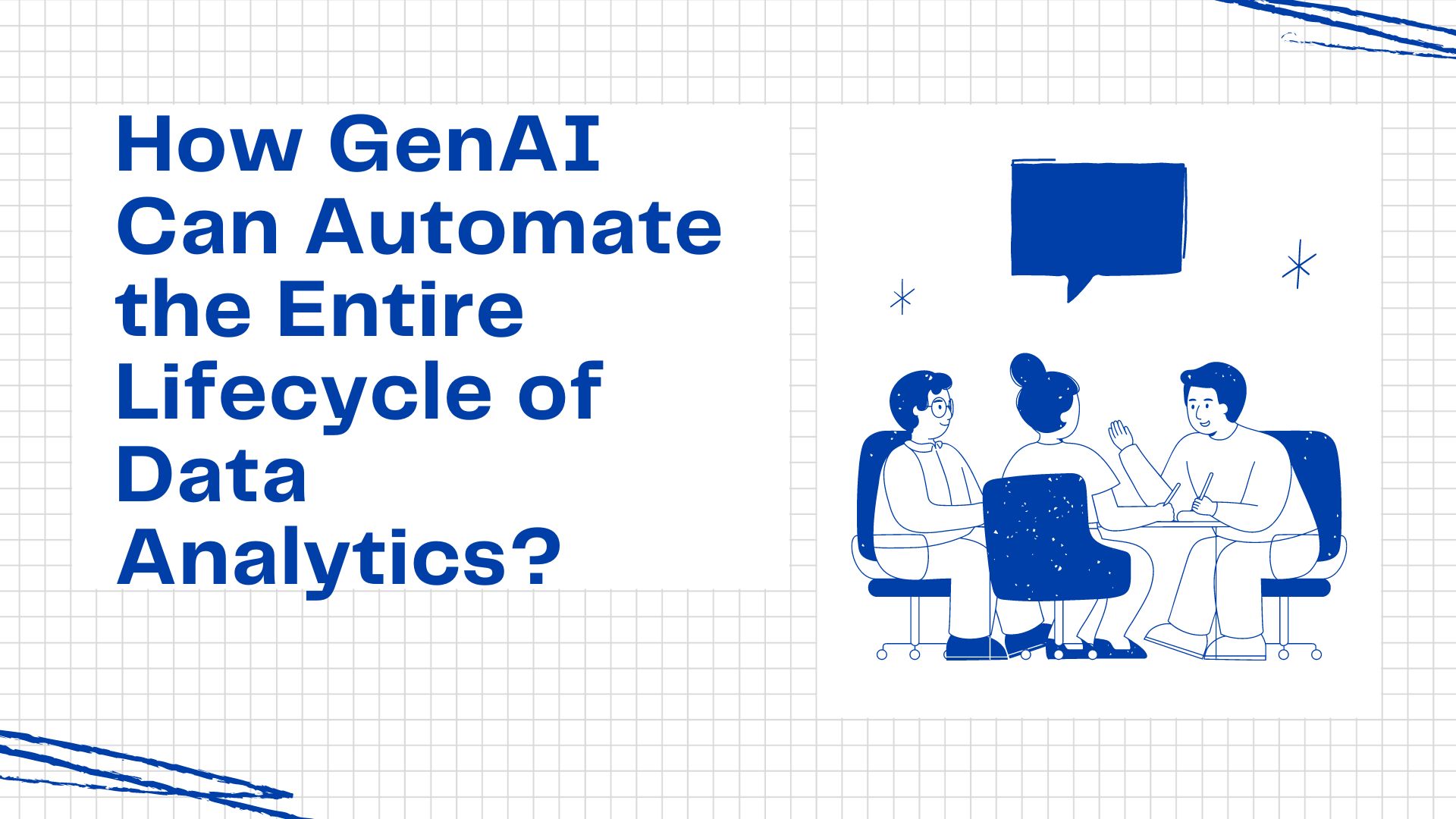 In today’s data-driven business environment, the ability to harness data for strategic decision-making is crucial. However, traditional data analytics processes can be time-consuming, resource-intensive, and prone to human error. This is where Generative AI (GenAI) comes into play, offering the potential to automate and revolutionize the entire lifecycle of data analytics. From data collection to insight generation, GenAI can streamline processes, enhance accuracy, and enable faster decision-making.
In today’s data-driven business environment, the ability to harness data for strategic decision-making is crucial. However, traditional data analytics processes can be time-consuming, resource-intensive, and prone to human error. This is where Generative AI (GenAI) comes into play, offering the potential to automate and revolutionize the entire lifecycle of data analytics. From data collection to insight generation, GenAI can streamline processes, enhance accuracy, and enable faster decision-making.
Table of Contents
1. Automating Data Collection and Preparation
The first step in the data analytics lifecycle is data collection and preparation. Traditionally, this involves gathering data from various sources, cleaning it, and organizing it into a usable format. These tasks can be labour-intensive and prone to errors, especially when dealing with large volumes of data.
GenAI’s Role
Data Integration
GenAI can automate the process of integrating data from diverse sources, ensuring that data is consistently and accurately consolidated.
Data Cleaning
By employing machine learning algorithms, GenAI can identify and rectify errors, remove duplicates, and fill in missing values, significantly reducing the time and effort required for data cleaning.
Data Transformation
GenAI can automatically transform raw data into structured formats suitable for analysis, applying necessary transformations, normalizations, and aggregations.
2. Enhancing Data Exploration and Visualization
Once data is prepared, the next step is to explore and visualize it to uncover patterns and insights. Traditional data visualization tools often require users to manually create charts and dashboards, which can be time-consuming and require a certain level of expertise.
GenAI’s Role
Automated Visualizations
GenAI can automatically generate meaningful visualizations from data, helping users to quickly identify trends and patterns without needing to create each chart manually.
Natural Language Processing (NLP)
GenAI can understand and respond to natural language queries, allowing users to interact with data using simple language. This makes data exploration more accessible to non-technical users.
Insight Generation
GenAI can analyze data and automatically generate insights, providing users with key findings and recommendations based on the data analysis.
3. Streamlining Data Analysis
Data analysis involves applying statistical methods and machine learning algorithms to extract valuable insights from data. This step often requires significant expertise and can be a bottleneck in the analytics process.
GenAI’s Role
Algorithm Selection
GenAI can automatically select and apply the most appropriate statistical methods and machine learning algorithms based on the data and the analysis objectives.
Model Training
GenAI can rapidly build and evaluate multiple models by automating the model training process, and selecting the best-performing ones for deployment.
Predictive Analytics
GenAI can generate predictive models that forecast future trends and behaviours, providing businesses with actionable insights for strategic planning.
4. Automating Reporting and Decision-Making
The final steps in the data analytics lifecycle involve reporting the findings and making data-driven decisions. Traditional reporting often involves manually compiling results into reports and presentations, which can be a tedious process.
GenAI’s Role
Automated Reporting
GenAI can automatically generate comprehensive reports and presentations, complete with visualizations and narratives, significantly reducing the time required for report creation.
Real-Time Insights
GenAI can provide real-time insights and updates, ensuring that decision-makers have the most up-to-date information available.
Decision Support
By integrating with business intelligence tools, GenAI can provide recommendations and decision support, helping businesses to make informed decisions quickly and accurately.
Benefits of Automating Data Analytics with GenAI
Efficiency and Speed
Automation of repetitive tasks significantly reduces the time required for data analytics processes, allowing businesses to respond to insights faster.
Accuracy and Consistency
GenAI reduces the risk of human error, ensuring that data processing, analysis, and reporting are consistently accurate.
Accessibility
GenAI democratizes data analytics by making it accessible to non-technical users, allowing more stakeholders to engage with and leverage data for decision-making.
Scalability
GenAI can handle large volumes of data and complex analytics tasks, making it scalable for organizations of all sizes.
Cost Savings
By automating labor-intensive processes, GenAI can lead to significant cost savings, allowing businesses to allocate resources more effectively.
Conclusion
Generative AI is poised to transform the data analytics landscape by automating the entire lifecycle, from data collection to decision-making. By leveraging GenAI, businesses can enhance efficiency, accuracy, and accessibility in their data analytics processes, ultimately driving better and faster decision-making. As GenAI continues to evolve, its integration into data analytics will become increasingly essential for organizations looking to stay competitive in a data-driven world.

Manashvi is a dedicated professional with over 7 plus years of experience in driving sales to new heights across the banking, insurance, and wealth management sectors. Currently aligned with Newfangled Vision, a tech-focused company, she showcases a strong interest in exploring tech verticals including Generative AI, no-code platforms, sustainable digital solutions, and big data analysis.

